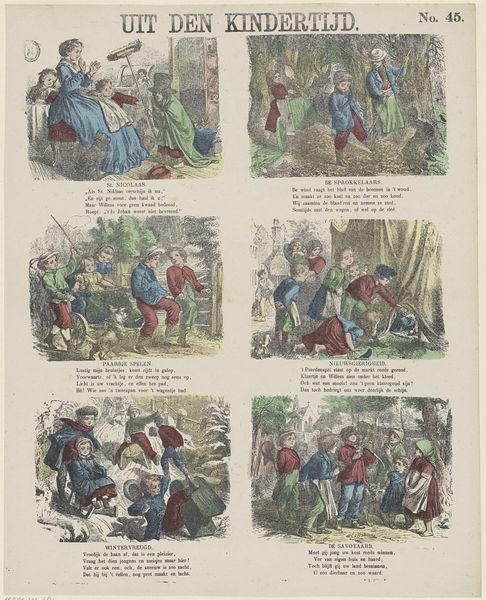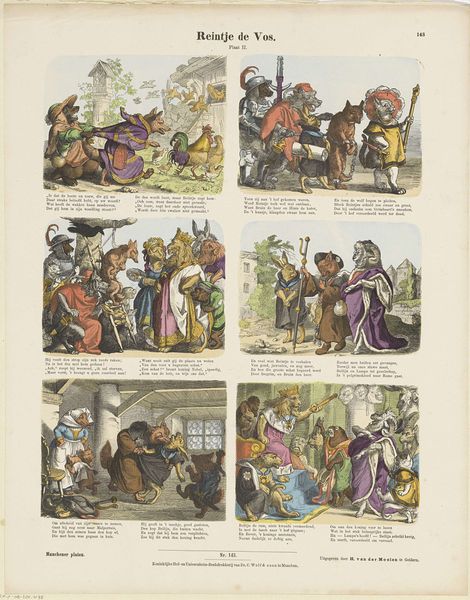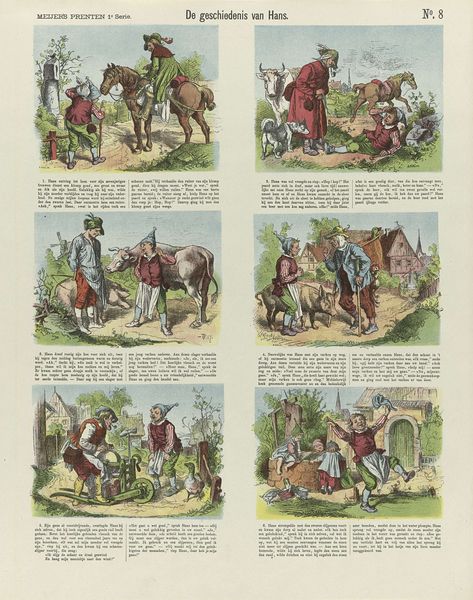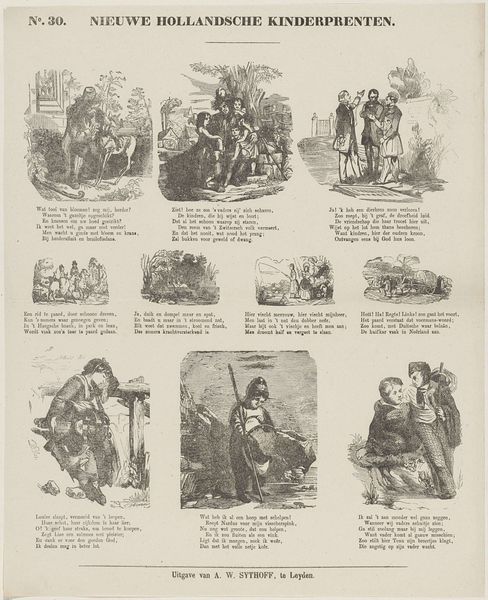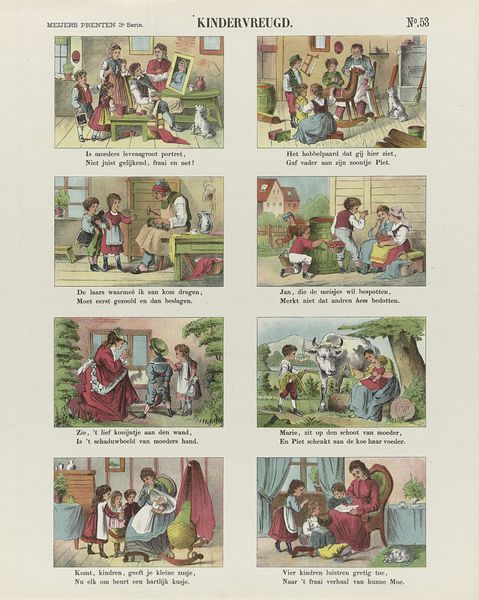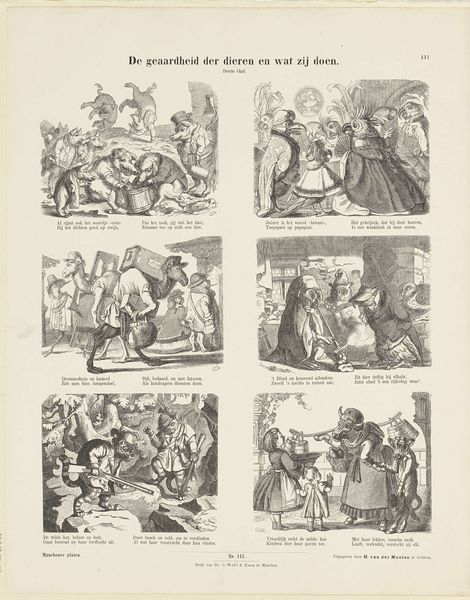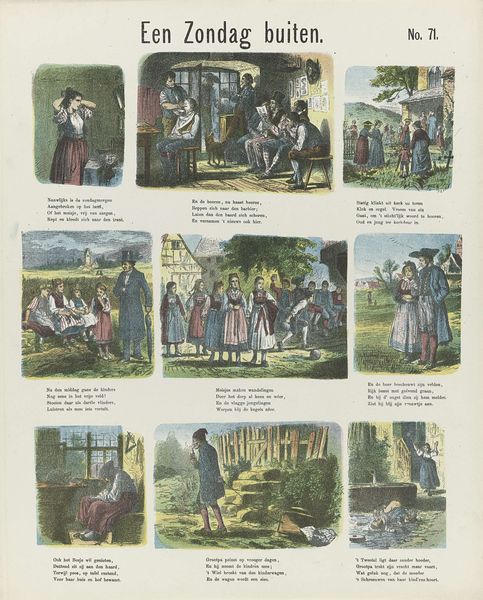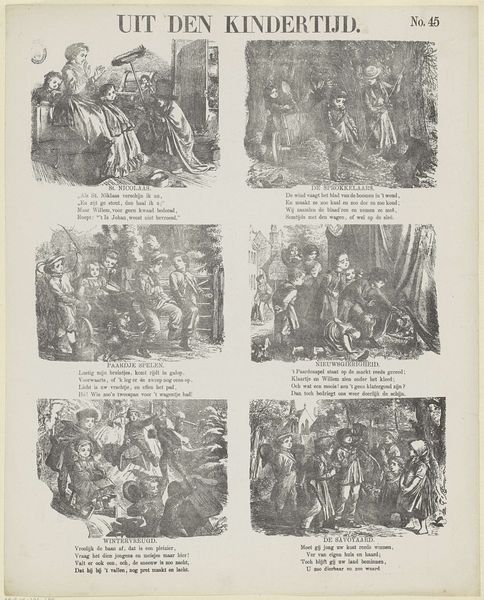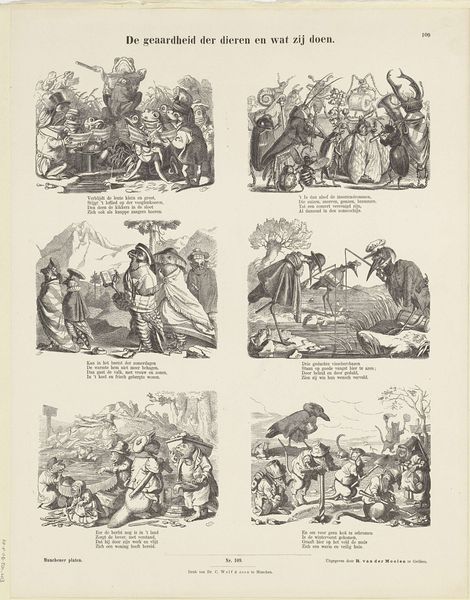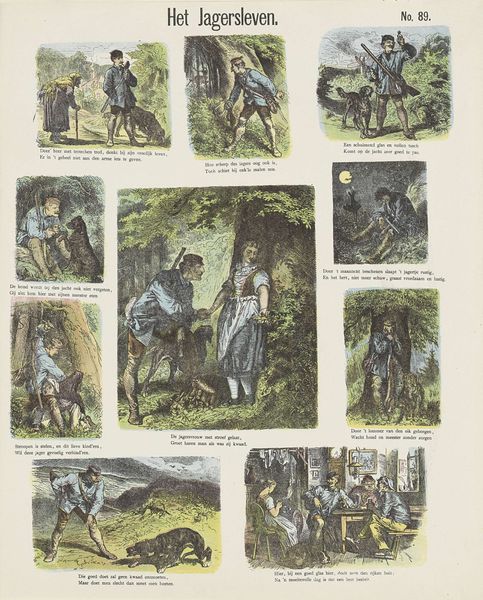
Dimensions: height 426 mm, width 346 mm
Copyright: Rijks Museum: Open Domain
Curator: What strikes me immediately about "Uit den Kindertijd," a watercolor print dating to 1874 by De Ruyter & Meijer, is its simultaneous charm and melancholy. Six vignettes, like scenes from a children's storybook, are presented on a single page. Editor: It is a romanticized vision of childhood, indeed. And placing it in its specific era allows us to examine the prevalent social attitudes and values of the time toward children. Looking at it now, what do those representations reveal? Each image contains social commentary embedded in everyday scenes, potentially speaking to power dynamics in relationships, gender roles, and perhaps class differences within these intimate and familial contexts. Curator: Certainly. Consider the image in the upper left, depicting the arrival of Sinterklaas. The details – a stern adult, wide-eyed children, symbolic items like the broom – offer multiple layers of meaning tied to tradition and the anticipation surrounding the holiday. The artists are playing with very well-known signs. Editor: The recurring motif of play, appearing throughout the other vignettes depicting games and outdoor activities, acts as a mirror to broader social frameworks governing children's behavior. How do they behave amongst themselves? Where does one recognize childhood rituals and celebrations? Each scene invites viewers to contemplate how norms and beliefs influenced the experiences and shaped the very identities of these young subjects. Even the act of gathering wood, as shown in "De Sprokkelaars", hints at an intersection between work and play. Curator: The print’s format as a reproducible image makes its social impact potentially wide-reaching. And in viewing such an art object today, it serves as an intriguing point for discussion – connecting the depiction of childhood as perceived back then and the societal expectations we've come to place on it in contemporary life. Editor: Agreed. It sparks dialogues about the evolution of those perceptions of childhood. Looking at "Uit den Kindertijd", there's a blend of innocence, play, and a hint of the adult world pressing in. It offers a rich study on continuity and the ongoing reinterpretation of how we've related to visual representation and cultural expectations over time.
Comments
No comments
Be the first to comment and join the conversation on the ultimate creative platform.
